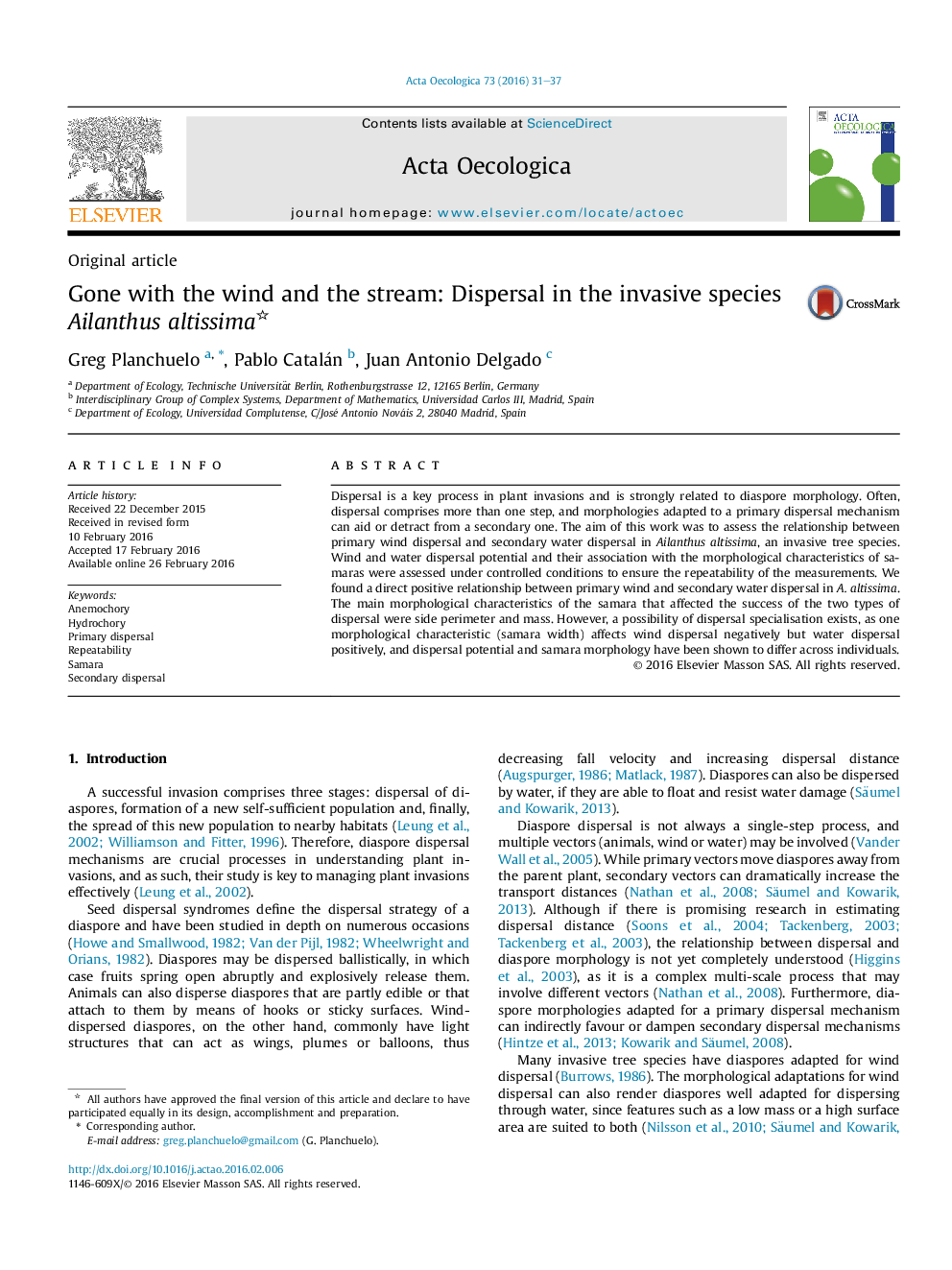| Article ID | Journal | Published Year | Pages | File Type |
|---|---|---|---|---|
| 4380699 | Acta Oecologica | 2016 | 7 Pages |
Abstract
Dispersal is a key process in plant invasions and is strongly related to diaspore morphology. Often, dispersal comprises more than one step, and morphologies adapted to a primary dispersal mechanism can aid or detract from a secondary one. The aim of this work was to assess the relationship between primary wind dispersal and secondary water dispersal in Ailanthus altissima, an invasive tree species. Wind and water dispersal potential and their association with the morphological characteristics of samaras were assessed under controlled conditions to ensure the repeatability of the measurements. We found a direct positive relationship between primary wind and secondary water dispersal in A. altissima. The main morphological characteristics of the samara that affected the success of the two types of dispersal were side perimeter and mass. However, a possibility of dispersal specialisation exists, as one morphological characteristic (samara width) affects wind dispersal negatively but water dispersal positively, and dispersal potential and samara morphology have been shown to differ across individuals.
Related Topics
Life Sciences
Agricultural and Biological Sciences
Ecology, Evolution, Behavior and Systematics
Authors
Greg Planchuelo, Pablo Catalán, Juan Antonio Delgado,
